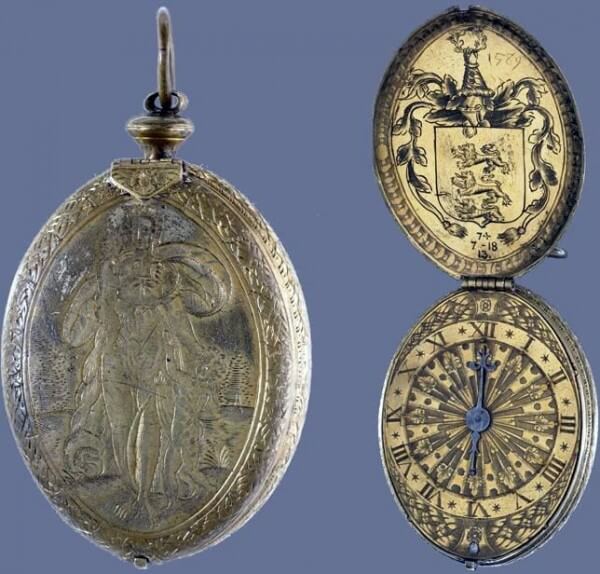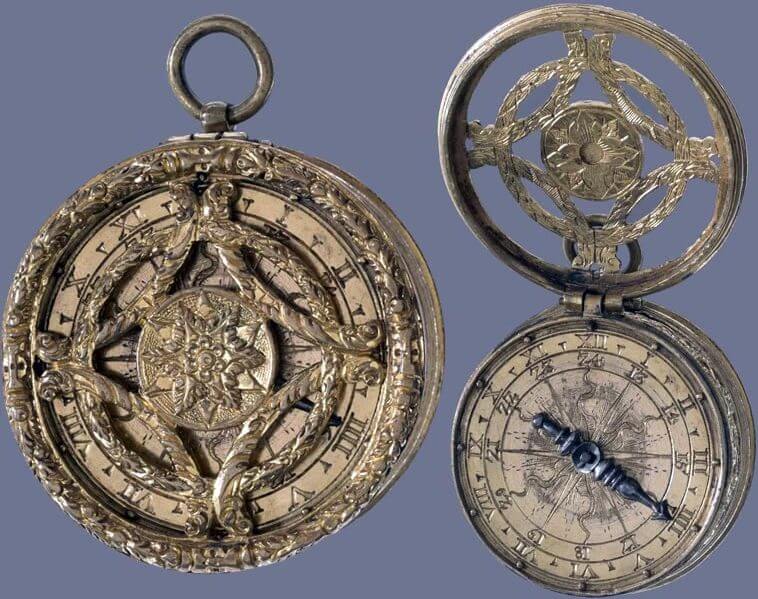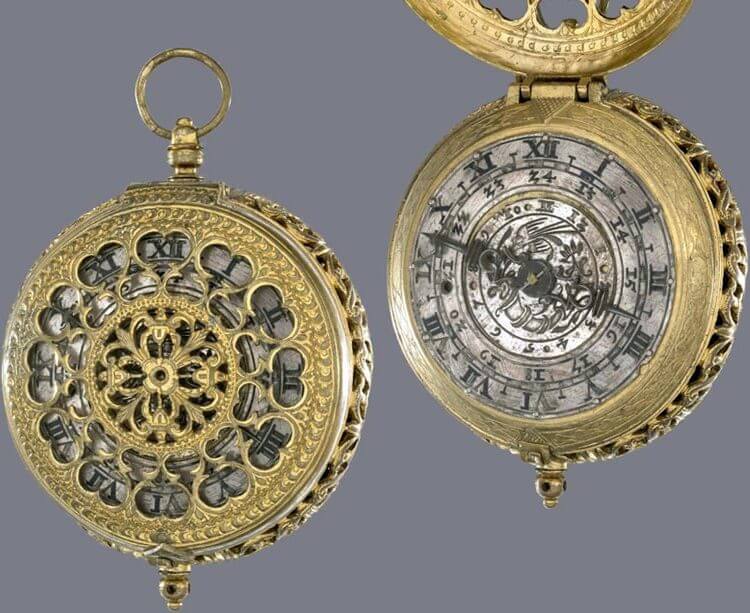“It is perhaps a common misconception that watches are produced by individual craftsmen labouring in trying conditions to create masterpieces in base and precious metals, in enamel and rock-crystal, or more recently in modern plastics. From the earliest period the completed watch was, with few exceptions, the result of the combined efforts of skilled and ingenious craftsmen who excelled in the arts of miniature clockmaking, gold- and silversmithing, springmaking, gilding, engraving and many other techniques.” In these few words, David Thompson pays tribute to the pioneers of modern watchmaking and their achievements, in a book that trains the spotlight on some of the 4,500 watches in the British Museum’s horological collection, from the sixteenth century to the present day. No doubt one of the finest collections of timepieces anywhere, most of the pieces were bequeathed to the museum by three collectors.

Germany, a renowned centre in the 16th century
Although no one can say exactly when, where and by whom the watch was “invented” (more a gradual evolution as mechanisms grew smaller from the late sixteenth century), we cannot fail to marvel at the historic models described in Watches*, a necessarily non-exhaustive catalogue of the collection. Not only for their ingenious mechanisms but also for the engraving that decorates their cases and dials. We owe these veritable works of art to blacksmith-engravers and their seasoned technique.
The very first timepiece in the catalogue, a “tambour” watch made in southern Germany in the 1560s, is a stunning example of a finely-crafted brass case, decorated with floral and animal motifs. A convex watch, the work of Hans Schniep (Germany, circa 1580), shows even greater refinement in its decoration. The dial, visible through chased openings in the case cover, is enhanced with basse-taille enamel. Decorative shapes, often exotic birds and floral arrangements, are cut from the metal then filled with coloured enamel.
Virgil Solis (1514-1562), an illustrator and engraver from Nuremberg, is given special mention for having inspired engravings, no doubt by the same artist, on numerous pieces by Ghyllis van Gheele. Charity with infants and Justice carrying a sword and scales are depicted on the front and back of the case.
Lyon and Geneva carry the torch
As David Thompson explains: “By the early seventeenth century, watchmaking in France had reached a high level of sophistication and the quality of engraved decoration on French cases was perhaps better than anywhere else in Europe. At that time one of the more important centres of watchmaking was Lyon, a city with a history in the craft stretching back well into the sixteenth century.” One of the greatest figures was Jean Vallier, who became a Master in 1602. The British Museum collection includes one of his most outstanding pieces, the finest that money could buy at that time.
The case is a work of art in itself. Its back is adorned with portraits of Apollo and the Nine Muses. The rim is edged with an exceptionally rare rope-twist decor, highlighted with pearl. Although the cover has been lost, the dial offers a stunning example of craftsmanship, with finely carved figures, including Apollo and Diane, surrounding the different displays showing the date, days of the week each with their ruling deity, seasons, months, age and phase of the moon, quarters and hours with passing strike, plus an alarm that can be set. While the engraver behind this masterpiece – and most likely another by Pierre Louteau, shown at the Rijkmuseum in Amsterdam – is unknown, the finished piece is, to borrow David Thompson’s description, “astounding.”
The work of Jean-Baptiste Duboule (1615-1694), a master watchmaker and engraver in Geneva, is represented by what is no doubt one of his finest pieces: a richly engraved travel watch with hour striking, measuring 10cm in diameter and made in the 1640s. An aperture at 12 o’clock shows the month with the corresponding sign of the zodiac. A dial at 3 o’clock indicates the age and phase of the moon. The seasons are displayed in another aperture at 5 o’clock. The hours and alarm are given at 6 o’clock, with a day/night indicator at 7 o’clock and the date and day of the week at 9 o’clock. The main dial is engraved with floral motifs while each of the discs for the various functions is embellished with figures that appear behind the apertures. A “tour de force” writes David Thompson, who makes clear the fascination still exerted by these timepieces, the work of craftsmen at the height of their art.
*Watches
by David Thompson,
British Museum Press, 2008 – 176 pages.
The British Museum
Great Russell Street
London WC1B 3DG
+44 (0)20 7323 8299
The Museum is open every day 10.00–17.30
Open late Thursdays and Fridays
The British Museum is free to all visitors
A charge may be made for some special exhibitions
















